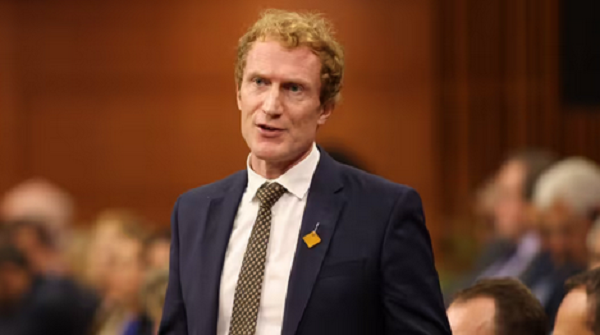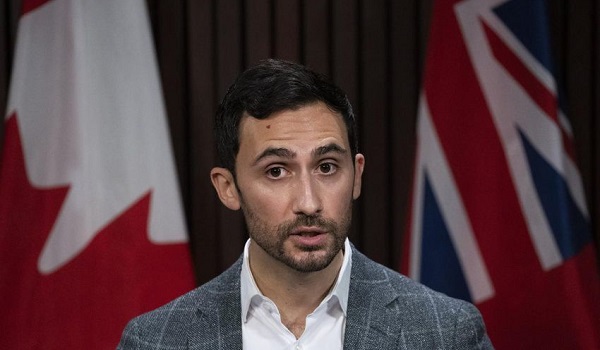Retailers prepare for drop in patronage during holiday spending as inflation pull Canadian consumers back
Toys R Us has learned a lesson.
This time last year, the retailer had planned on a relatively discount-light holiday season, expecting Canadian shoppers to start checking off their gift lists as early as September and October, as they had during the height of the COVID years. But instead, customers who were feeling the pain of inflation held out, waiting for sales to make sure they got the best price on those toys.
“We had to pivot,” said Nick Muriella, vice-president of merchandising and supply chain at Toys R Us Canada. “And I would expect customers to expect the same thing this year: discounts, value.”
If anything, retailers are facing a more challenging environment now. While prices have been climbing for the past two years, the effect is cumulative. So is the effect of the Bank of Canada’s 10 interest-rate hikes since last year, which trickle through the economy as people renew mortgages and other loans. Feeling the mounting financial stress, customers are watching their budgets more closely than ever.
Consulting firm Deloitte Canada expects Canadians will spend 11 per cent less this holiday season than last year, amid concerns about a recession and their personal finances. That total decrease is offset by higher expected spending on travel during the holidays; spending on gifts will actually decline more sharply, by 18 per cent, according to Deloitte. In a survey of more than 1,000 Canadians, 77 per cent reported that they will be shopping around, visiting more stores and e-commerce sites than they did last year, to search for better deals.
“We had a bit of a soft back-to-school season as well. So that’s another indicator of what’s to come for the holidays,” said Marty Weintraub, national retail consulting leader at Deloitte Canada.
Softening consumer demand is one piece of the puzzle. Another is supply. Some retailers, and the manufacturers that make the products they sell, are still working through a glut of inventory.
“There’s a ton of it, because everybody ordered for the old supply-chain challenges – knowing you had to order 130 per cent to get 80 per cent,” said Peter Hlynsky, who was recently promoted to the role of CEO at outdoor recreation retailer MEC. As factories caught up, “all of a sudden, you’re flooded with inventory.”
MEC has been negotiating – both with the brands it sells, and with the suppliers that make its own store-brand products – for lower wholesale prices, to offer better deals on the floor and clear out excess stock. As one example, the retailer bought 3,000 pairs of shoes that normally sell for $170, that will instead have a $99 price tag.
Suppliers and retailers both make smaller profit margins when offering deep discounts, Mr. Hlynsky said, but make up for it in dollar volumes when they are able to move products. “That’s the best way to solve a problem when everybody’s pinched,” he said.
Toys R Us has also been negotiating with suppliers, after seeing prices go up during the worst of the supply-chain snags. Ahead of this fall season, its merchant team has been pushing suppliers to bring a $30 toy, for example, down to $25 or $20.
“The consumer is very conscious of how they spend their money,” Mr. Hlynsky said. Retailers will be responding.
“We know that the feeling in the market, and what we’re hearing in retail, is that all those Black Friday deals are going to start earlier in November,” he said.
Deals will be important to spur on shoppers who are paying more for the types of purchases they can’t avoid. Canadians are now spending almost 10 per cent more on essentials compared with a year ago, according to recent data from Royal Bank of Canada. As a consequence, people are cutting back where they can. RBC noted declines in both nominal retail sales and inflation-adjusted retail spending excluding auto, in September.
“As the sun sets on the summer 2023 spending spree, Canadians have started to pare back,” the RBC report noted.
One early sales event may provide a barometer for a tricky holiday retail season. Amazon’s Prime Big Deal Days event in October offered up discounts – but Canadians still held back. According to data from software and analytics firm Salesforce, online sales declined by 12 per cent in Canada over the two-day event, compared with a 1-per-cent decline in the U.S.
“Consumers are waiting. They are taking control of their finances,” said Rob Garf, vice-president and general manager of retail at Salesforce. “We’re always concerned, as retailers, that it’s a race to the bottom. But the reality is, there’s such a direct correlation between discount rates and sales. And consumers have gotten really smart, they’ve gotten really patient.”
Each year, Hudson’s Bay kicks off its holiday season early with the autumn Bay Days sale, which just wrapped up at the end of October. This year, knowing shoppers are reticent, the retailer is also planning to advertise two-day sales throughout the season, putting individual items on deep discount for a limited time. One-day deals were a common holiday feature for Hudson’s Bay roughly a decade ago, but the stores are reviving the strategy this year.
“This holiday shopping season is under particularly aggressive pressures, and consumers need their dollars to go further,” Kevin Parry, senior vice-president of marketing at Hudson’s Bay, said in a statement. “What that means is some of the deepest and strongest promotional offers we’ve ever seen, but also, increased loyalty rewards, extended returns and additional services.”
It’s not just about discounts. Retailers are also mindful that they need to more prominently display some of their lower-priced products to appeal to shoppers looking for a range of gift options.
At Toys R Us Canada, most of the “end caps” – high-visibility display shelves at the end of each aisle – are focused on “price points that are more value-driven,” Mr. Muriella said.
The Body Shop, which also sees the highest percentage of its annual sales during the eight-week holiday period, has re-thought some of its store displays as well, to give more prominence to items at a lower price range.
“Where perhaps in past years we would have been comfortable being quite proud of medium and large gifts … we equally need to be responsible and make sure that we’re merchandizing small and more entry-level gifts into our plans this year,” said Hilary Lloyd, vice-president of marketing and corporate social responsibility at The Body Shop North America.
The retailer recently struck a deal to sell its products at Shoppers Drug Mart stores and online, which it is hoping will also be an opportunity to reach customers looking for smaller gifts this year.
One thing is clear: Retailers will have to work to appeal to cash-strapped customers, and those efforts will not end once the holidays are done.
“It takes time to go through the system,” Deloitte’s Mr. Weintraub said. “You’ve got millions of mortgages; they don’t all flip at the same time. So we’re not done.
“The pressure on the consumer is probably going to get worse before it gets better.”
This article was reported by The Globe and Mail
















